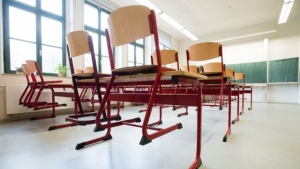UNICEF: Reopening of Schools Needs to be Prioritized
Schools should be among the first to re-open when safety measures are put in place. The longer children stay out of school, the more exposed they are to various risks. This is especially true for children who are already vulnerable. As the situation improves and lockdowns are being eased, it's time to put children back on the learning track.
Strict measures were taken to help contain the spread of COVID-19 and flatten the curve. There is increasing evidence that children and schools are not the main drivers of the epidemic across countries. In fact, there is no known evidence on the correlation between the rate of disease transmission and whether schools remain open or closed.
On the other hand, there is overwhelming evidence of the negative impact of school closures on children’s physical and mental health, nutrition, safety and learning. When children are out of school for prolonged periods of time, their exposure to physical, emotional and sexual violence increases. Their mental health deteriorates. They are more vulnerable to child labour and less likely to break out of the cycle of poverty. For the most marginalized, missing out on school -- even if only for a couple of weeks -- can lead to negative outcomes that last a lifetime. Children who lack education have a lower life expectancy and poorer health outcomes.
The decision of when to reopen schools should be made in the best interest of children and overall public health. The decision must be based on an assessment of the associated benefits and risks and informed by cross-sectoral and context-specific evidence, including education, public health and socioeconomic factors. School operations will need to align with public health measures, and adjustments will need to be made when new information on risks or changes in local transmission and conditions arises.
UNICEF has released guidance to help governments re-open schools safely. Some of the recommendations include:
- Adequate water and hygiene facilities that are critical to the safe reopening of schools;
- Implementing physical distancing measures, including prohibiting activities that require large gatherings;
- Staggering the start and close of the school day;
- Staggering school mealtimes;
- Moving classes to temporary spaces or outdoors;
- Lessons provided in shifts, to reduce class size.
We must ensure that when schools reopen, every child is included and learns; every child has access to school-based health, hygiene and nutrition services; and every child is connected to the internet. This global disruption can be a catalyst for a once-in-a-lifetime transformation in our schools so that every child learns the skills they need to succeed in life, school and work.












